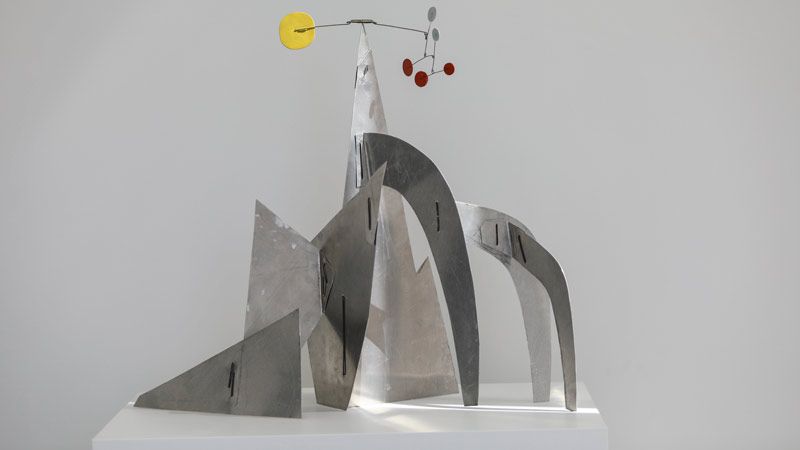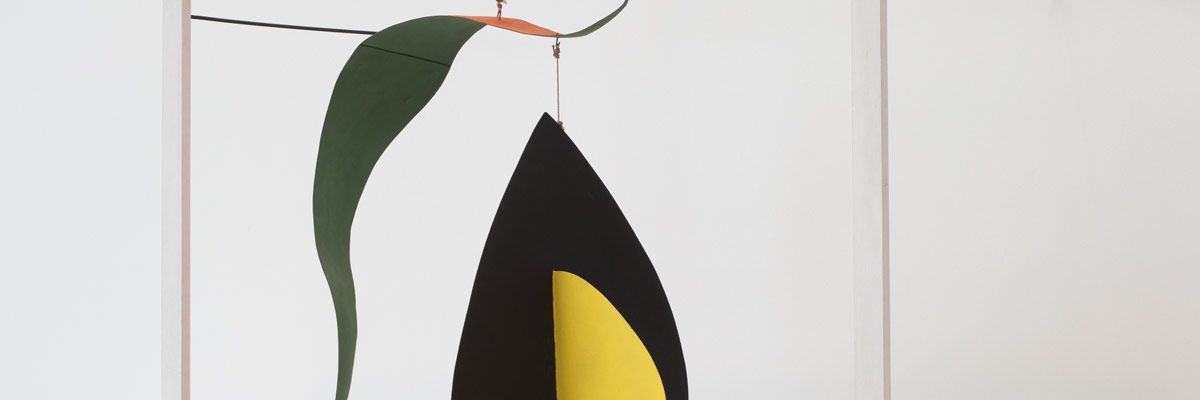

Calder had many friends who were artists and some of them have participated in this exhibition. He wrote them letters, and he visited them whenever he could, as on the day when he went to Paris to see his friend Piet Mondrian.
Mondrian painted vertical and horizontal lines, and he filled the remaining rectangles inside with colors. You may have seen some of his works in books. If his name doesn’t ring a bell, you can search on the Internet, and you will quickly recognize his art.
When Calder arrived at Mondrian’s studio, he was astonished by the environment. One wall was covered by cardboard rectangles in various colors, and the light that entered through the window illuminated them. Calder imagined that the rectangles were moving, and he thought he should make the shapes move for real. Mondrian didn’t find the idea interesting, but Calder was fascinated by it. From then on, all his works would have movement.
A year later, Calder began to develop three- and four-dimensional objects that move, such as the works that you see here. If you look Square from the side, you can see the mechanism he created. Are you able to figure out how the pieces would move?
Now we can’t move them because we could damage the art work, but we can use our imagination.
We also have a room in this exhibition where you can see short animations of Calder’s designs moving. Let’s see if you like them!
Shall we go on? Go to the window that overlooks the Jardines de Pereda.
If you need information or want to make a suggestion, please contact us below. Thank you.
We use cookies to gather data about your visit and analyse it in order to improve our website and serve personalised content. Go to our cookie policy for further information and manage your cookie settings.
Choose the types of cookies you want to allow on our website and then click the save button to save your preferences.

This content is blocked. Accept cookies within the '%CC%' category to view this content.